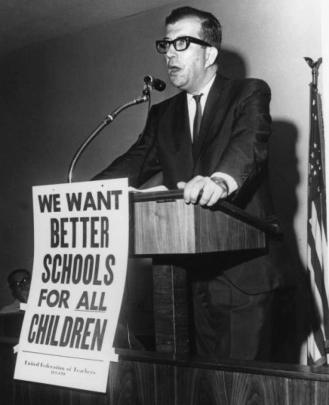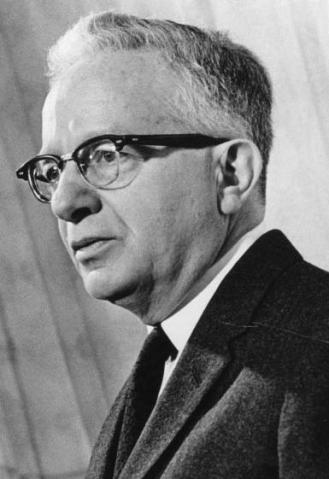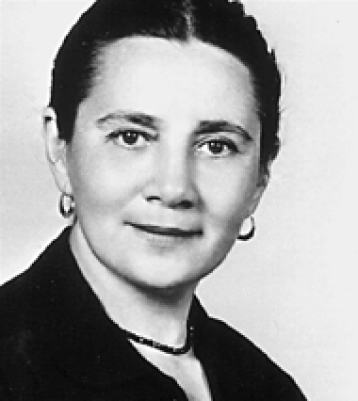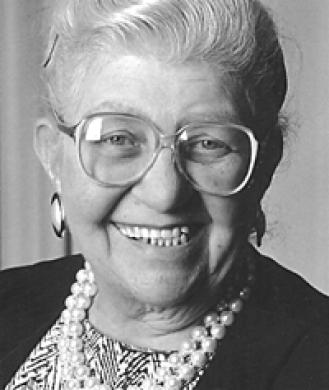Class struggles: The UFT story, part 2
by Jack Schierenbeck
Though she retired in 1990 after 37 years of teaching, on most days Rose Moran can be found at UFT headquarters in mid-Manhattan. A regular at the Si Beagle Learning Center, she attends workshops in calligraphy, art history, folk dancing, then gets the blood moving with an exercise class. “It’s wonderful,” says the former chapter leader. “The union continues to enrich my life. I’m 100 percent, true-blue UFT.”
Unions are in her blood. Moran’s Irish immigrant parents were Roosevelt Democrats and staunch union supporters — she’d even voted for Adlai Stevenson over Dwight D.
Eisenhower in 1956. “The only magazine that ever came to the house was from Local 488 of the Carpenters’ Union,” she says. “From an early age, I understood my father had a job because of the union.”
Raised in the Bronx, Moran went to Catholic grammar and high schools before going off to Hunter College to become a teacher. One summer in a steno pool had convinced her that she wasn’t cut out for the business world. “I was the only girl in the entire neighborhood who went to college,” she says. “I really wanted to be a journalist, but I didn’t have the means. The only careers really open to women back then were secretarial, nursing or teaching.”
In 1953, Moran’s first assignment took her to the far north Bronx. “PS 72 wasn’t what you would call a radical hotbed,” she says. “I don’t remember anyone from the Teachers Guild ever coming to talk with us. But I’d heard talk that they were communists.
“Not that it would have mattered. Really, it was a very conservative, lady-like environment. Those women wouldn’t have given a thought to joining a union. It was beneath them.”
But on Monday, Nov. 7, 1960, her beliefs collided with her fears. “I was a Depression baby, scared to lose my job.” So with a “twinge of guilt,” Rose Moran went to work, while a tiny minority of teachers went on strike. She didn’t have to cross a picket line. Like most of the city’s grade schools, it was business as usual at PS 37.
Part 2

Albert Shanker
Ever the agent provocateur, Al Shanker reminded the large UFT Teacher Union Day audience last fall that in the 1950s there was no shortage of naysayers who said teachers would never get their act together: “Can teachers ever be organized? Well, no they can’t be. Because they’re snobs. They think of themselves as professionals. Most of them are women who don’t need the money. Right?”
Shanker had hit a raw nerve. An audible murmur went up from the crowd. “Whoa,” he said, holding up his hands, smiling. “I’m not saying that. That’s a quote from a lot of discussions in teacher rooms as to why this would never happen.”
Forty years earlier, Shanker had every reason to doubt. He’d studied symbolic logic in graduate school. But you didn’t have to be a logician to figure out that organizing teachers was going nowhere.
The numbers told the story: Between 1930 and 1960, the number of teachers in the union had doubled to a whopping 8.8 percent!
It’s not that New York City’s 45,000 public school teachers didn’t have their gripes. In fact, they should have been fighting mad. America’s post-World War II full-throttle economy had all but skipped public education. Teachers’ real wages were never lower. Conditions in the schools were deplorable. Yet fewer than one in 10 teachers had joined the union, leaving Shanker and others scratching their heads in disbelief. Why was it so much harder to organize school workers than, say, steelworkers?
106 different organizations
It was a case of self-inflicted wounds, said Charles Cogen. In 1952 Cogen, then president of the Teachers Guild, had come to the view that teachers’ problems were largely of their own making. The biggest stumbling block, he wrote, was the “curse of the 57 varieties, or more, of teachers’ organizations, [a situation] as unique as it is tragic.
“Divided along subject lines, divided by boroughs, divided by religious groupings, divided by grade levels, divided according to type of occupation, we in this city bear the curse of our misadventures in disunity,” railed Cogen.
“Is it any wonder that cynics sometimes say of New York City teachers’ frustrations, defeats and failures, ‘It serves them right for not sticking together.’”
Cogen was referring to the dizzying array of teacher “associations.”
“There were Catholic, Jewish, Italian and Irish teaching associations. Everything but the blue-eyed teachers association,” Si Beagle quipped years later.
Teachers in the Bronx had their own group, as did all the boroughs. The “Kindergarten-6B Teachers Association” had thousands of members, built largely on their opposition to higher salaries for high school teachers.
High school teachers, in the meantime, were unapologetic and adamantly opposed to a single salary schedule. “There was a feeling of elitism that high school teachers were better qualified and deserving of higher status,” recalls Roger Parente, a leader in the High School Teachers Association during the 1950s.
On paper, the high school teachers had a point. The preparation and credentials needed to teach secondary school were more demanding. But as Rebecca Simonson later recalled, high school teachers more often than not held their grade school counterparts in disdain. “The high school teacher considered himself superior to the elementary school teacher because he had higher qualifications to get the job and he was teaching older children. He looked upon the teaching of young children as unimportant work,” Simonson said.
While some of the organizations were little more than letterheads, others did make their presence felt. The largest such group, the Brooklyn Teachers Association, actually published journals and a newsletter with teaching tips, stories about teachers, ideas for class trips, museum show listings, organized outings and vacation tours. The BTA even created a coop to get discounts from Brooklyn merchants, and dispensed interest-free loans.
In total, some 106 separate organizations dotted the landscape, pushing and pulling in opposite directions. Serving separate interests and agendas, the rival organizations could be ruthlessly cutthroat, especially when it came time to slice the budget pie.
In the days before collective bargaining, salaries weren’t so much negotiated as dictated. Every year, a block-long line of supplicants would plead their cases before the Board of Estimate. The hearings would last long into the night as every imaginable organization made its case for a raise, often at the expense of fellow teachers. The groveling came to be known as “collective begging.”
Ethnic cleavages
There were other sources of friction. By the turn of the century, the crush of new immigrants was changing the face of the city. Where Irish and Germans once held sway, by 1920 southern and eastern European immigrants predominated. The city’s 1.5 million Jews quickly became objects of both scorn and fear. Schools weren’t immune.
Much has been written about that unsettling time, most notably Irving Howe’s masterwork “World of Our Fathers.” Little, though, has been said of the role that ethnic tensions played in driving teachers apart and stalling unionization.
Ruth Markowitz’s book, “My Daughter, the Teacher is an exception. She writes that the steady stream of Jews — mostly women — into teaching after 1920 was a sore point for the Irish and old-stock Yankee teachers who’d had a lock on the classroom since the mid 19th century. Most of the time the uneasiness was expressed in cold-shoulder separatism; at other times it was open and hostile, with gentile teachers reading known anti-Semitic literature in the teachers’ room or making ethnic slurs.
In one school, stickers were found that said: “Gentile teachers organize or lose your jobs to Jews. Join the Gentile defense front,” writes Markowitz. “Another leaflet with the heading ‘Teachers Union Mostly Jews,’ and sub-headed ‘Communism is Jewish’ was distributed.”
Fanning anti-Jewish feelings was the infamous radio priest Charles Coughlin. Markowitz cites a 1939 story in Coughlin’s magazine Social Justice headlined, “Are Reds in Control of New York Schools?” The story listed the names of prominent members of the New York City Teachers Union with the words “Jew,” “Jewess,” “Gentile,” or “Undetermined” next to each name.
Charlie Michaelson recalls the New York of the 1930s and ’40s as a city of “tribal villages.” Michaelson, a longtime reporter for UFT and NYSUT papers, says that ethnic uneasiness wasn’t so much a case of antagonism but a wariness, borne of almost total isolation. “You have to remember there was very little contact outside your group. The Irish lived on the West Side of Manhattan and parts of the Bronx, the Italians were in the Village and sections of Brooklyn, the Jews on the lower East Side, the Bronx and in Williamsburg.
“Even the men worked in jobs that left little opportunity to get to know outsiders. The Irish, for example, had the waterfront, subways, most of the building trades and of course the police and fire departments. The Jews, on the other hand, had the garment and textile trade pretty much sewn up for themselves. Until World War II and the rush to the suburbs, everybody more or less stuck to their own kind.”
Organizing’s a ‘nightmare’
More than ethnic enmities kept teachers apart. The very logistics of organizing made it a struggle. A union such as the United Auto Workers could reach thousands of workers at one shot at Henry Ford’s mammoth River Rouge assembly plant in Detroit, but unionizing New York City’s schools essentially meant organizing hundreds of Mom and Pop stores one at a time.
“Sometimes you’d get lucky and turn a hot-shot organizer loose in a big school with dozens if not hundreds of teachers,” says George Altomare, one of the UFT’s early organizing geniuses. “But other times, the effectiveness of some of our best organizers was limited by the fact that they were assigned to a tiny school where the numbers weren’t there.”
Besides, as Altomare points out, the organizing efforts of teachers, like those of all public employees, were not protected by the 1935 National Labor Relations Act. “We had no legal right to leaflet or hold organizing meetings in the school. If you had an unsympathetic principal — and there were plenty of stinkers — he could keep his school off-limits to the union.”
High teacher turnover didn’t help either. “Many of the men who entered teaching during the 50s and even the 60s did so as a stopgap. They figured they’d teach a while and move on to real job,” recalls Altomare. “Well, if you think a job is only temporary, why struggle to make it better? It was no different for women who knew that they’d be gone for long stretches of time on maternity. Turnover was like a safety valve for the system bleeding off discontent.”
Classroom dividers
Getting teachers together was very different from conventional organizing, adds Altomare. The very nature of the work process — holed up alone behind closed doors in separate classrooms — isolated teachers from one another and made shop-floor solidarity impossible. “In most workplaces, you can always find time to kibitz with the worker next to you,” Altomare says. “My mother was a cutter in the garment trade and even when she was doing the sleeves, she could be talking with the person next to her: ‘Hey, the boss is trying to cut the payments, maybe we should slow down.’
“Over the course of the ordinary school day, there were no coffee breaks where people might strike up a conversation. In elementary schools, there wasn’t even a lunch break to speak of. Even in the high schools, teachers are always pressed for time, marking papers or preparing lessons,” Altomare points out.
Where other workers might go out for a beer after their shifts, most female teachers with school-age children had to hurry home. Many male teachers moonlighted as salesmen and insurance agents or taught night school to support their families. “People were exhausted from the side jobs, the travel and the homework preparation, not to mention the teaching,” says Altomare.
Getting teachers to stick together was also complicated by the rigid separation of their work and personal lives. Before the post-war suburban exodus, workers lived within walking distance or a short commute from work. So organizing a union meeting — or, for that matter, a bowling or a softball team — was a lot easier when people lived in the neighborhood.
“Teachers never had that luxury. Where you lived and where you were assigned had nothing to do with one another,” he said. “Believe me, having teachers so cut off from one another both on and off the job made forging relationships — no less unions — an uphill struggle. From an organizing standpoint, it was a nightmare.”
Mind you, not that everyone was looking to join a union. More often than not, teachers’ very perception of themselves as “professionals” made the idea of joining a union unthinkable.
‘It’s just unprofessional’
Rightly or wrongly, many teachers had professional aspirations or pretensions. They thought of themselves more akin to doctors and lawyers. “Teachers in the elementary schools were still the professional ladies who believed that teachers should not strike,” recalls Jeannette DiLorenzo. “They still wore hats and gloves. They still acted in a way that said, ‘No matter how little I earn, my professional dignity will not permit me to be in a union.”
Janet Miller vividly recalls conversations with teachers at PS 113 in Brooklyn in the late 1950s. “In the teachers’ lounge, you’d hear talk of how terrible the very idea of a union was. How dare we associate ourselves with mine workers and garment workers. We’re better than that. We’re educated. It’s just unprofessional,” remembered Miller.
“To be told you were a worker didn’t sit well with many teachers,” says Andy Weiss, a Cornell University historian, who has studied teacher unionism in the 1920s and ’30s “[Teachers] were jarred and offended by a class analysis that said, ‘We’re the workers and they’re the bosses.’”
Yet another school of thought held that teacher unions were so slow to catch on because so many teachers were women. Family and not work, the argument went, was a woman’s priority. No matter how bad things got on the job, she’d always have the consolations of home. On top of that, was the idea that a woman’s wages were an extra or “pin money.” Besides, as nature’s nurturers, women would always put their students before themselves. Tradition-bound, pushed around, passive and lacking ambition, women were seen to be their own worst enemies. Only when men entered teaching in sufficient numbers would union organizing have a fighting chance.
A turn-off to women
In her forthcoming book, “City Teachers” (Teachers College Press, fall 1996), Kate Rousmaniere lays the blame on the unions themselves. “The union wasn’t set up to appeal to women,” she says. Rousmaniere, who teaches at Ohio’s Miami University, points to the scheduling of after-school meetings and the highly confrontational screaming-match atmosphere.
With men running the show, she says, the union became too intellectual and too rigidly ideological. “The union spent too much time wrangling over ideology and politics rather than bread-and-butter issues and immediate workplace needs.” Rousmaniere also says that anyone looking to understand why women didn’t jump at the chance to join has to realize that the average female teacher had a higher degree of job satisfaction. “When it comes to salary, pension and maternity, it was by the late 1920s the best white-collar job open to women.
“It was a chance for women to get up in front of a group of people — even though they were little people — and express themselves. They earned the self-respect they couldn’t get in the rest of society.”
There’s no denying that, for all its problems, teaching was a definite step up for working-class women. Compared to a life as a domestic, a salesclerk or a sweatshop hand, a career as a schoolteacher offered security, stability and status.
The fictional character Sara Smolinsky, in a 1925 novel “The Breadgivers,” spoke for many real-life women when she said that becoming a teacher “was like looking up to the top of the highest skyscraper while down in the gutter.” And as Ruth Markowitz makes abundantly clear in her book, immigrant working class Jewish children held their teachers in almost God-like awe.
“I remember how I admired them. I wanted to be just like them,” recalled one teacher in Markowitz’ book.
Rebecca Simonson made a similar point to the UFT’s oral history project in 1985. Oppression, she said, was par for the course for women, but the classroom offered an escape, albeit an imperfect one. “Teaching was the first chance for these women to step out of one social group, which had been working and living under very trying conditions, into a prestige group.
“Their position, therefore, was a more precarious one. They took a lot of guff from their administrators. They were afraid of any recourse. They hardly understood the need [for a union]. They were growing up out of an oppressed group into another.
“They were afraid of a [union],” Simonson recalled. “They would trust a professional organization more than a union, which never meant much to these people — not at home; not in the press; not in the society at large.”
So between the organizational, legal, cultural and perceptual hurdles, it’s no wonder teachers had trouble getting their act together. Still, none of these proved as divisive as politics — radical politics, that is — in keeping a mass union from forming prior to the 1960s. But that’s a story in itself.
Originally published in New York Teacher, March 4th 1996


